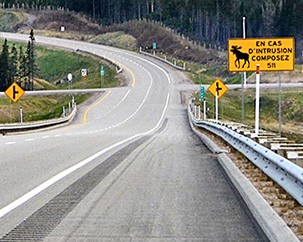Researchers: Jonathan Cole and Jochen Jaeger
Highlights:
- The Adirondack–Laurentians ecological corridor is a critical movement linkage for wildlife.
- This region boasts a wide variety of habitats that still maintain a high degree of ecological integrity and are rich in biodiversity.
- Population growth over the past 50 years has caused a rise in development putting the area under increased risk of habitat loss and landscape fragmentation.
- This prject involves measuring changes in habitat amount, fragmentation, and connectivity in the Adirondacks to Laurentians (A2L) transboundary wildlife linkage from 1992 to 2018.
- This work is conducted at three spatial scales (study area, provincial/state portion, MRC)/county) using six species (eastern wolf, black bear, fisher, moose, white-tailed deer and porcupine).
- The purpose of his research is to locate priority areas for protection and ecological restoration as well as pin-point optimal sites for the placement of wildlife crossing structures and fencing.
- Another aspect of this research involves the establishment of optimal configurations for wildlife crossing structures and fencing to reduce animal-vehicle collisions and increase species connectivity.

